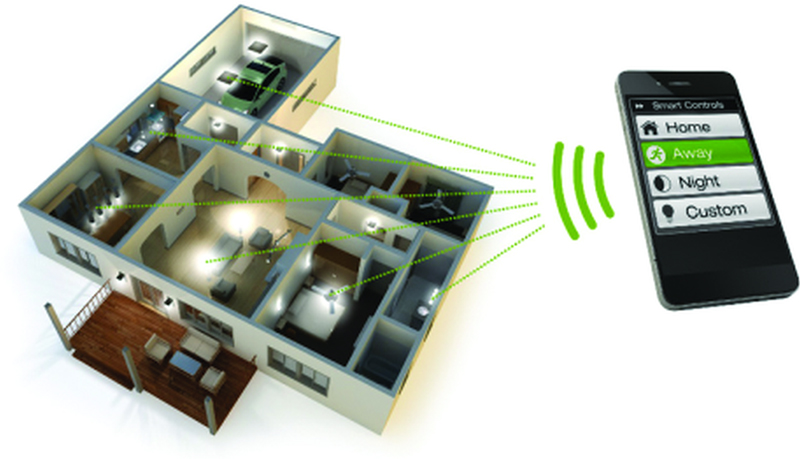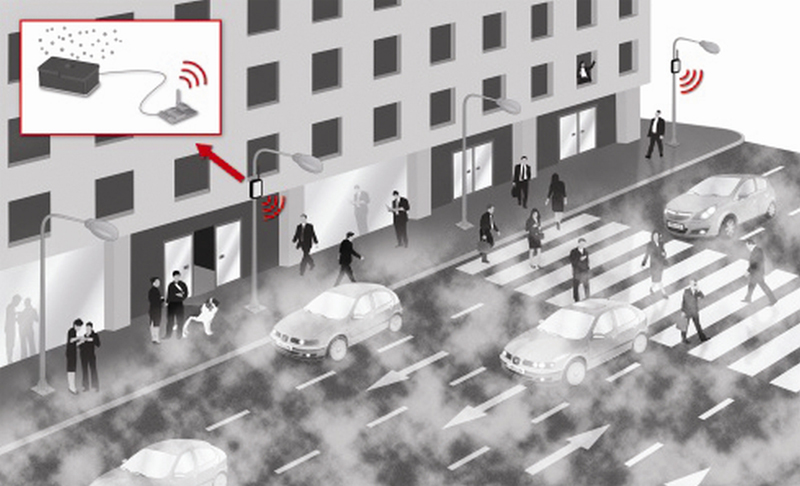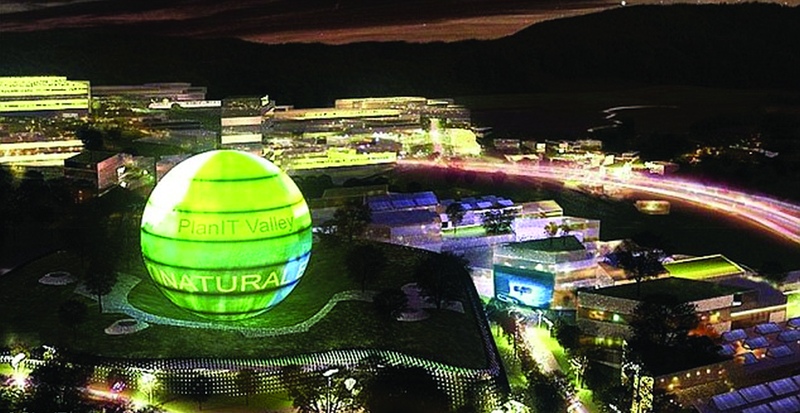Author:
Chris Sullivan, Technical Marketing, Newark element14
Date
02/13/2013
A city by its very nature tends towards chaos. As the population of the world continues to grow, so does the population living in urban areas. The need to maintain all of the essential services that keep us living a comfortable lifestyle implies that more and more resources will have to be allocated to the utilities that none of us usually notice until they go wrong. The only way around this is to simplify these processes by making, for example, our water, gas, electricity, and transportation as easy and simple as possible to distribute and monitor. Consumer goods are leaps and bounds ahead in this respect. Gadgets that we didn't know we wanted or needed can appeal directly to our hearts by their simplicity, and have already woven themselves into the fabric of our daily lives. A smart city should take this approach and apply it to all aspects of our infrastructure. Without massive government spending, or starting from scratch, patchwork modifications to our existing utilities and transit systems will form the core of our future cities. Again, our desire for simplicity spills over into the need for efficiency, and it is here that sensing and automation technology can effectively improve the day-to-day services that we're used to. Transportation A growing number of cities around the world are also returning to more traditional forms of mass transit. Our love affair with the car is on borrowed time, and electrified trolley buses and trams will be a common sight in smart cities of the future as it becomes more and more expensive to operate a passenger vehicle. Some European cities, in fact, never phased out trams as obsolete and they continue to provide an essential and clean form of mass transit. Low-cost low-power technologies such as RFID have already been widely adopted for keeping track of products in shops and our baggage at airports. As cities become increasingly large and the pressure for efficiency in every service grows, even the garbage that we make and would like to forget about requires the expertise of electronic engineers. Using low power systems to keep control of shared residential garbage and recycling facilities would make the process of collecting and disposing of waste much more efficient, and some cities such as Barcelona have already implemented semi-automated block refuse collection. Water The water that flows through the pipes of our smart city will more than likely be flowing through much the same distribution network as today. The problems of water scarcity and water loss will become massively important as the world population grows bigger, and measures will need to be taken to limit our consumption. In the US, 6 billion gallons per day are lost and controlling the leakage of water and limiting water consumption could save $15 billion per year globally according to the World Bank. Utility companies seeking to limit water loss have already started to adopt smart systems from companies such as the Israeli start-up TaKaDu to limit water loss. By combining software with telemetry and smart metering, utility companies have made some inroads into limiting water loss. This example of using innovative electronics to cut down on waste showcases how our cities are becoming smart in our lifetimes. It is by using technology available today that electronic engineers can make even the simplest of utilities smart. However, questions remain as to what extent it's possible to prop up an aging infrastructure, and whether these measures significantly future-proof our utilities. Communication It is in communication that it is easiest in some ways to imagine a smart city. Trials currently underway into 4G networks will one day become a day-to-day reality for the majority of cities. It doesn't take an enormous leap of the imagination to think of ourselves walking through a city of the future watching HD video streamed in real-time to our tablet or smart phone. Looking to countries like South Korea, who are far ahead of the curve in terms of a super fast internet, we can expect that countries across the world will follow suit over the next decade. However, the fast lane of communication will also need to run in parallel with much lower power channels. Wireless control of the appliances in our homes is already a reality with some applications allowing us to communicate with a home server remotely to turn the central heating on, or record a TV show. The move to digital television has made available significant white space in the RF spectrum, providing a much-needed set of frequencies that will allow our ever-growing use of telecommunications to expand further. Despite this, as demand for bandwidth continues to increase, so too will the sophistication of the communication methods. The development of SDMA (space division multiple access) and smart antennae will be critical if our future smart cities are to support the kind of network traffic that may be generated with high-definition audio and video in communications. Traffic management As we drive around the streets of our smart city, wireless communications between our vehicles will become more and more important. Keeping our cars moving through what are now gridlocked streets will reduce emissions, improve trade links, and shorten our journey times to work. A combination of dynamic traffic monitoring, GPS, and low-power vehicle-to-vehicle communications will serve to keep the wheels turning. Many countries have already implemented aspects of this type of traffic control, especially managed motorways, which are intended to slow down traffic to the speed necessary to avoid jams, though a more cohesive approach will be needed as our cities grow. As a current example, smart social-networking application running on dash-mounted smart phones crowd sources the timing of red traffic lights and shares that information with other drivers to optimise fuel usage and resulting emissions (figure 1). The SignalGuru application, a project of the Massachusetts Institute of Technology and Princeton University, allows drivers to save an average of 20% fuel costs compared to those that had to stop at traffic lights (reference 1). The application has worked well in Cambridge, Massachusetts where traffic lights are on a fixed timing. The system worked less well in Singapore where traffic light timings vary, but one can envision M2M (machine-to-machine) connected devices being able to track and communicate traffic light timings as well information from other vehicles through a real time database to make our roads safer and more efficient.

Street lighting Lighting our way as we make our journeys around the cities of tomorrow, it will not be the familiar orange glow of the sodium street light that guides us, but energy efficient LEDs casting a cold white light. As the cost of LED illumination decreases, we can expect to see accelerated uptake of LED street lighting throughout our cities. Replacing existing lighting technology with energy efficient LEDs would halve the carbon footprint that street lighting carries. Many of the cities we live in already use LED technology in traffic lights and signals, though uptake of street lighting has been slower with some residents complaining about the perceived brightness of cold color temperature LEDs. The balance will need to be struck in the cities of the future between sleepy residential zones and major routes where a white light will give increased attention span. Energy harvesting It is in the home that our smart cities will first take root. With oil and gas prices continuing to climb, alternative energy on a personal scale will become a key feature of housing in our future cities. Home solar power is already popular, though in the smart city photovoltaic cells will be concentrated on commercial buildings and ground mounts rather than houses. While the UK has the greatest proportion of residential solar panels in Europe at 95% of total generation capacity, it is only 12% in Germany, where the total output is much higherâ€"7 GW compared to the UK's 45 MWâ€"according to the European Photovoltaic Industry Association. In the smart home, making the most of every electricity drain through energy efficiency and energy harvesting will produce the savings required to reduce our overall carbon footprint. Here again it is the low-cost low-power products and methods that will make our homes smart. Smart homes It is when we return to our homes at the end of the day where the smart city will probably have the most impact. Energy recapture, smart metering, and personal health monitoring will ensure that our houses are safer, more comfortable, and energy efficient than ever. Energy savings will also derive from the centralization of home computing. What we experience now as the Cloud will become more pervasive, though home servers and centralized computers will be important components in reducing the number of computers in the home. With this centralization will also come the potential to capture waste heat. In larger, commercial buildings, the waste heat from the server room could provide an important heat source for the building as a whole. The introduction of smart meters will give consumers the option to monitor and control their power consumption onlineâ€"a much-talked-about flagship of smart cities. This is just the beginning. What if every light bulb had an IP address? The possibilities are endless: You could monitor, manage and control every light bulb from any Internet-enabled device, turning lights on and off individually, dimming or creating scenes from your smartphone, tablet, PC, or TV to save energy as well as electricity costs (figure 2).

Your smart lighting network could have dozens or even hundreds of appliances connected through a wireless network designed for maximum energy savings, communicating information about their environment and power consumption levels, and alerting you to any problems. An example of such capability has been provided by NXP and partners in their internet-enabled Greenchip Smart Lighting network, which starts to shape a new dimension in energy efficient lighting for the smart home (reference 2). Public health and urban management In the end, it may be that the size of the smart city is limited by technology that monitors our health and wellbeing. The vast sprawling metropolis of the developing world has expanded so quickly owing to the availability of cars and mass transit, but the effect has been compounded by the need to be close to healthcare facilities. With improvements in communications links allowing for remote diagnosis and surgery, it will no longer be as critical to live close to an urban center to experience an adequate standard of care. This may lead, in turn, to a slowing of the advance that has characterized the vast cities of China, India, and indeed the US several decades before them. Beyond matters of individual health, today's city councils face many public-health challenges requiring effective monitoring. Atmospheric pollutionâ€"whether in the form of gases such as CO2 and NO2 or particulatesâ€"is a threat to the health of urban dwellers by causing respiratory diseases. Sensor boards able to monitor gas, radiation, particulate matter, and vibrational data could be integrated into wireless networks to build a wide range of services for quake and gas monitoring (figure 3). These technologies could facilitate even more localised applications such as structural health monitoring on buildings. Sensors and networks have so far addressed these within different standards and different vertical applications. A uniform modular approach run on open source software would allow city councils to enable better infrastructure cost effectively (reference 3).

A current example of a city-wide network is found in Portugal, which is pioneering a sensory system for a smart city and estimates 100 million sensors across an area of just 17 km2 (figure 4). The biggest challenge to a smart city becoming reality is the ability to analyse seamlessly and process huge amounts of the data generated in real time, according to TU Darmstadt project Cocoon team. The answer to this is to channel all the data coming from these sensors and services into an over-arching control system via its own operating system. Urban OS, developed by Living PlanetIT and its technology partners, is an operating system that could manage communication between sensors and devices such as traffic lights, air conditioning or water pumps that influence the quality of city life. For example, in the event of a fire, the Urban OS might manage traffic lights so fire engines can reach the blaze swiftly or help evacuate people much more quickly and efficiently within nearby or affected buildings (reference 4). A secure system that can uninterruptedly run the infrastructure of our cities would bring the sensory network of smart urban areas to life. Evolving to smart and efficient cities Living in such a rapidly advancing age, it is easy to forget that the cities we live in were driven by an earlier time, when the gears and levers of industry were oiled by large work forces that lived close to their jobs. The world will never quite shrink to the point that Arthur C Clarke envisaged in 1964 but, as our vast urban areas become smarter in myriad ways, it is likely that the city will become an easily accessible hub facilitating our daily lives. After all, cities are a way of centralizing and making things easier. Elements of the smart city are with us today, dispersed throughout the world. The clean tram systems of Strasbourg, the autonomous transportation at Heathrow Airport in London, the solar collectors of Masdar city, and the augmented reality many of us use on our smart phones will all one day be key features of our smart cities. Above all, the technology we need to make our cities smart is here with us today. It is the engineers, the innovators of the world, who will be the ones to turn applications once reserved for flashy gadgetry into essential services that keep our utilities, transport, and communications running. It will be the quiet unnoticed background that enables us to live the complicated lives we choose to. Element 14 References: 1. Source: Massachusetts Institute of Technology and Princeton University, USA 2. Source: NXP 3. Source: Libelium 4. Source: Living Planet IT, Project Cocoon TU Darmstadt